The art of dentures continues to evolve rapidly, thanks to medical and technological progress. Prosthetic reconstruction treatments, adapted to each case of partial or complete edentulism, are available to all patients. But the most comfortable, practical and durable treatments – fixed prostheses on implants – remain expensive and are poorly refunded by national health systems, unlike removable dentures, which are less practical and less aesthetic. This guide to dental prostheses will help you choose the right solutions to your dental concerns and the right medical care at the best value for money. To get your smile back, for the rest of your life.
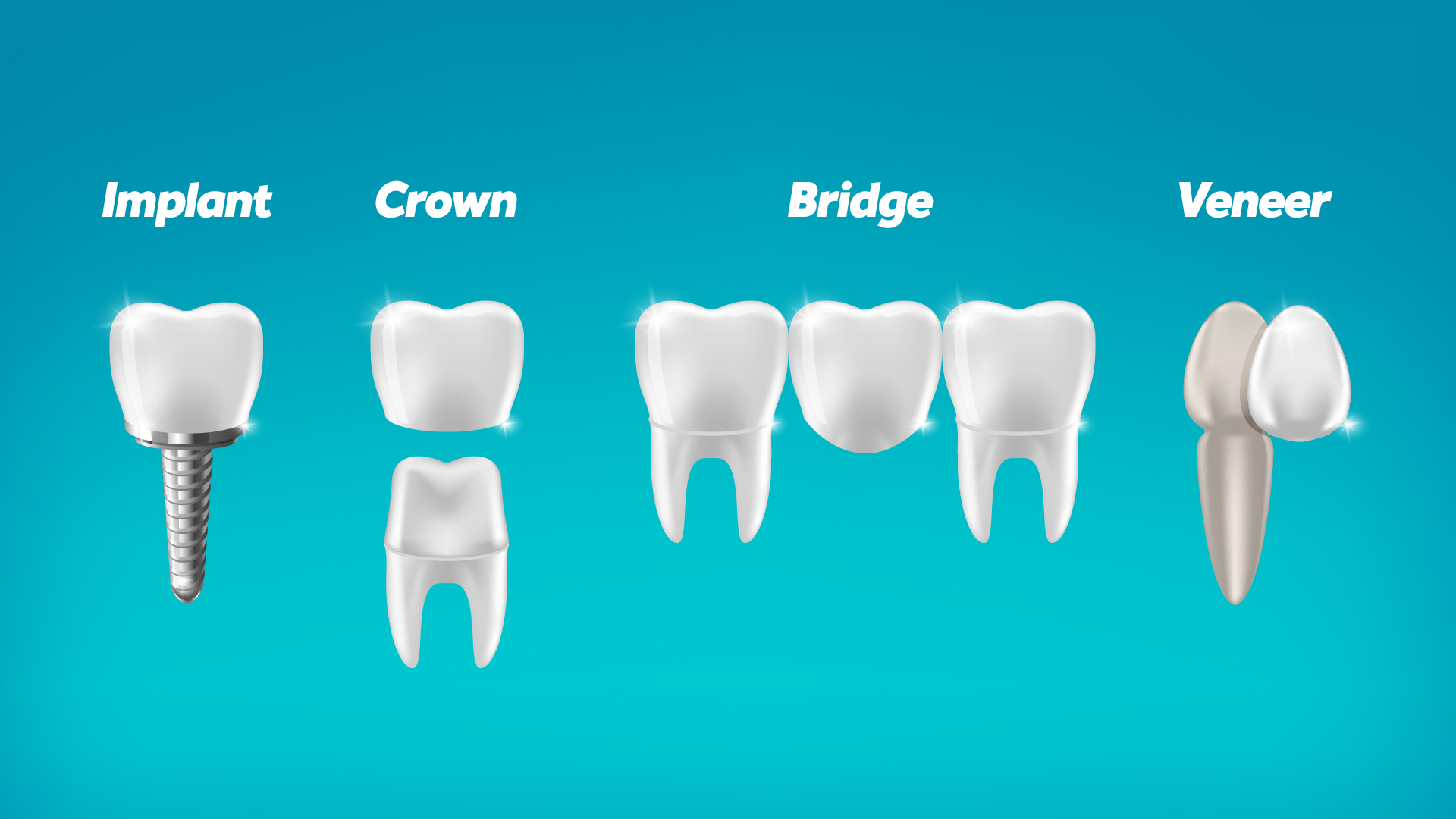
From cow tooth to titanium, 3000 years of dental prostheses evolution
Since the dawn of mankind, humans have always sought a solution to their health problems. From a stupid domestic accident – a finger cut off while trying to make fire between two sharp flints, or a bloody confrontation with an enemy tribe, leaving leg or arm on the battlefield, man has sought to replace his missing parts with artificial devices. During Greek antiquity, Herodotus mentions the use of “prosthesis” (which means “to add to” in ancient Greek) to replace amputated hands or legs.

A tooth being, a priori, way easier to replace than a foot, the ancestors of our dentists also quickly sought to create artificial teeth. The first known dental prosthesis would be Etruscan, and would date from 2600 years ago: made from a cow’s tooth carved and incised with vertical lines to simulate natural teeth, it replaced three upper incisors, and was fixed to the neighboring teeth by a gold wire. The patient was certainly a high-ranking dignitary: this kind of treatment was certainly not as democratized as dental tourism… But it was already a huge medical step. As for the Phoenicians, they knew how to create “bridges”, by making a gold bridge between two teeth, fixed with ligatures of the same alloy.

Around the 18th century, in Europe, artificial teeth, first carved in ox femur bone or in ivory, took off thanks to the use of porcelain: mineral prostheses were born, able to resist the corrosiveness of saliva. But it is especially the First World War, in 1914-1918, with its cohorts of “broken heads” returning from the trenches, which will make progress in facial and dental reconstruction surgery. Several types of prostheses were invented, using new materials: removable prosthesis replacing a complete dentition, made of rubber or plastic, metal or ceramic, or fixed prosthesis for partial edentulism, with porcelain crowns or metal bridges making a “bridge” by leaning on the pillar teeth. Today, digital imaging assistance and high-precision machining of precious biocompatible materials – titanium, zirconia, porcelain, etc. – make it possible to solve edentulism and mastication problems in the long term, with an aesthetic result close to perfection.
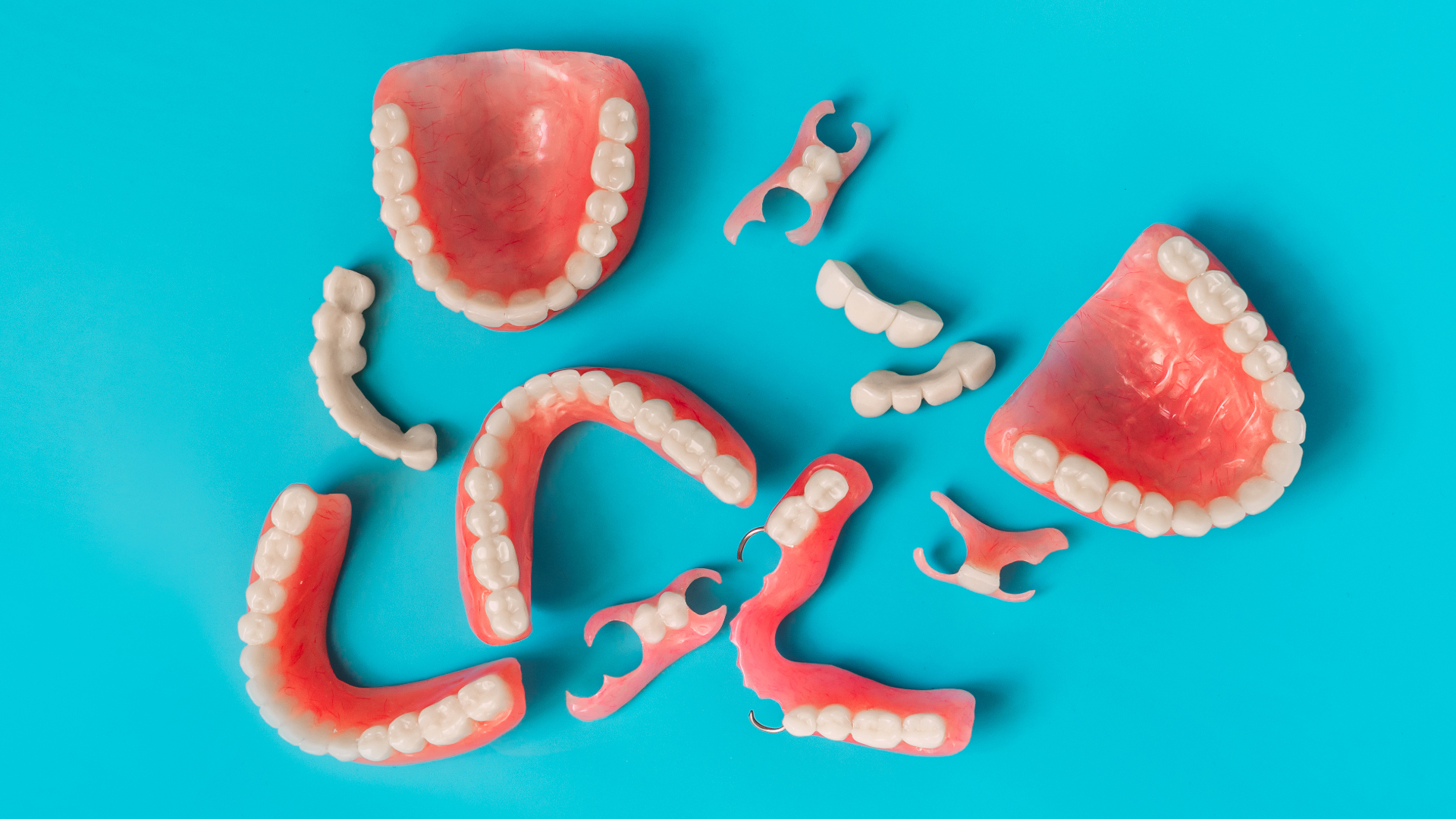
Why use dental prostheses?
Dental prosthesis is a medical solution that allows patients to fill missing teeth with an artificial dental device, removable or fixed, in order to regain a comfortable mastication, to avoid maxillary bone degradation and to rebuild a facial aesthetic aspect, all essential to the good health of the patient.
Dentures are made by dental technicians, working with the prescribing dental office, who use the molds and impressions provided by the dental surgeon to machine artificial teeth to the nearest micron, and perfectly adapt the artificial teeth to the patient’s dentition and facial anatomy.
Dental prostheses can be fitted when a tooth is worn or damaged, when one or more teeth are missing, or when, for various reasons (accident, genetic or bone disease, poor oral hygiene…), a patient is partially or completely toothless. Depending on the diagnosis and the solutions proposed by the dental surgeon, many types of dental prosthesis are available.

Fixed prostheses with dental implants and artificial teeth placed on All-on-6 in the case of complete edentulism, or bridges supported by healthy teeth in the case of partial edentulism, are becoming more and more common, at the expense of removable prostheses, with partial bridges or full dentures. Ceramic or metal, fixed or removable dental prostheses depend on the treatment and its invasivity, the materials used, their durability and their price. Surface dentures can also have an essentially aesthetic purpose, with dental veneers or dental crowns, fixed on healthy teeth, correcting certain overlaps, minor gaps or chipped teeth.
Fixed dental prostheses
Thanks to the medical progress made in dental implantology, fixed dental prostheses are now more recommended than removable dental prostheses. They are more expensive and more complex to install than removable dentures, but they are much more durable, comfortable and aesthetic. Also, dental implants have the ability to activate the jawbone like a healthy natural root. They however require impeccable oral hygiene.

For a complete jaw
In case of a complete edentulous jaw, on the upper, the lower or both jaws, the best prosthetic solution consists of screwing titanium implants into the jawbone, on which a complete ceramic dental arch is fixed.
Fixed prosthesis on implant (All-on-4, All-on-6 or All-on-8)
Fixed “All-On” dentures can support 10 to 14 artificial teeth per jaw, mounted on four (All-On 4), six (All-On 6) or even eight (All-On 8) dental implants. These implant-supported full bridges for fully edentulous patients offer a more comfortable, durable and serviceable attachment process than conventional dentures. Their chewing comfort and aesthetic effect are maximized.

Depending on the surgeon’s diagnosis, the patient is offered several types of All-on 4 or All-on 6 screw-retained bridge prostheses. Four to six titanium implants are implanted at regular intervals in the jawbone, providing a chewing thrust distributed over the entire prosthesis. A prosthetic arch, supporting a resin false gum and consisting of ten to fourteen ceramic teeth, is screwed onto the implants with four or six titanium pins. This allows the patient to regain a perfect chewing position and a natural smile.

All-On 6 implants offer the best value for money for patients who are completely edentulous, with a healthy jawbone, and integrate fully into the dentition without the need for a partial denture. The All-On 4 has the advantage of being implanted with less bone mass, with the bottom implant anchored at an angle in the bone when it is too degraded to accommodate six implants. This allows patients to regain good mastication in a shorter period of time and without the need for bone grafting. On the other hand, the All-On 4 requires wearing a semi-denture, and experts consider it to be less solid and less durable than the All-On-6.

Implant-supported fixed dentures
Fixed implant-supported dentures, also called stabilized dentures, refer to removable dentures that are attached to two to four dental implants. Suitable for partially or completely edentulous patients, these dentures are a good alternative to removable appliances, whose upper bridge interferes with speech and food appreciation. Better fixed, it offers a chewing comfort superior to the classic denture. This semi-removable treatment must be removed and cleaned every night. Its life span does not exceed ten years, and its clip-on buttons are generally changed every two years.

Screw-retained prosthesis on implants
The Removable Complete Supra-Implant Prosthesis (RCSP) is a screw-retained implant prosthesis supported by two, four or six implants. An interesting alternative to conventional dentures for totally edentulous patients, especially for the elderly, RCSPs are less expensive and easier to fabricate, offer better comfort and simplified maintenance. However, their lifespan does not exceed ten years, because of their resin construction.
To replace one or more missing teeth
When a patient is missing one or more teeth, several types of dental prostheses can be used to replace the missing teeth, with impeccable aesthetic and chewing results.
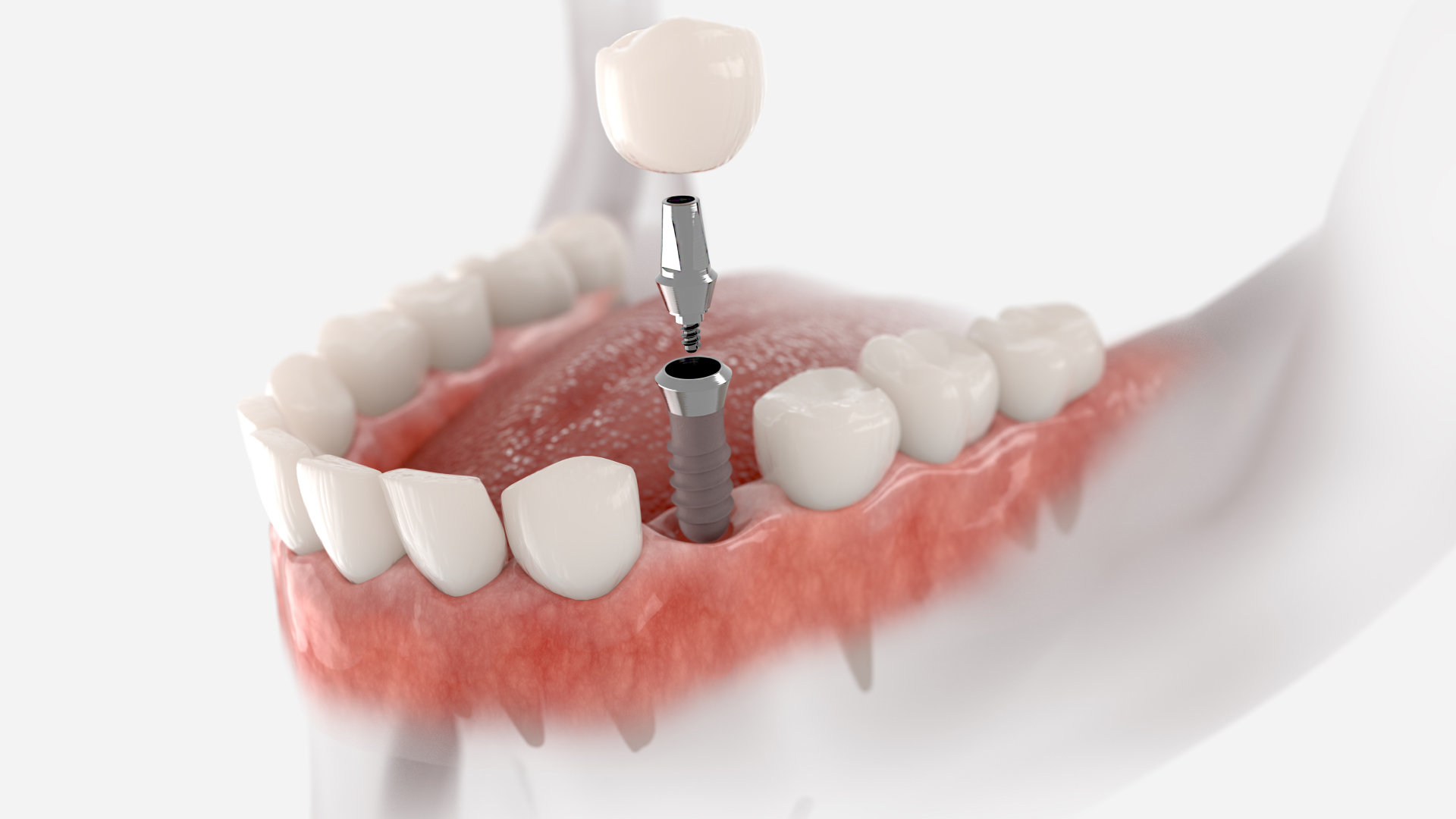
The dental implant and its screwed crown
When an isolated tooth and its root are missing or too damaged, and the patient has a healthy bone base, the surgeon will propose the use of a titanium dental implant, screwed into the bone, which will serve as a base for a monolithic zirconia ceramic crown, screwed onto the implant. A more expensive solution, but much more solid, comfortable and durable than a dental bridge.
Dental bridges
When one or more teeth are missing, and their neighbors are damaged or fragile and require crowns after treatment, or if the presence of nearby implants limits the possibilities of intervention, the dental surgeon can then propose the creation of a bridge, which will avoid the installation of an implant for the missing tooth or teeth. The bridge is a series of 3 to 5 associated crowns, made of ceramic or metal-ceramic, which will be supported either by implants or by neighboring teeth, or by treated teeth covered with an abutment, or by healthy teeth that have been cut down beforehand for optimal integration of the bridge.
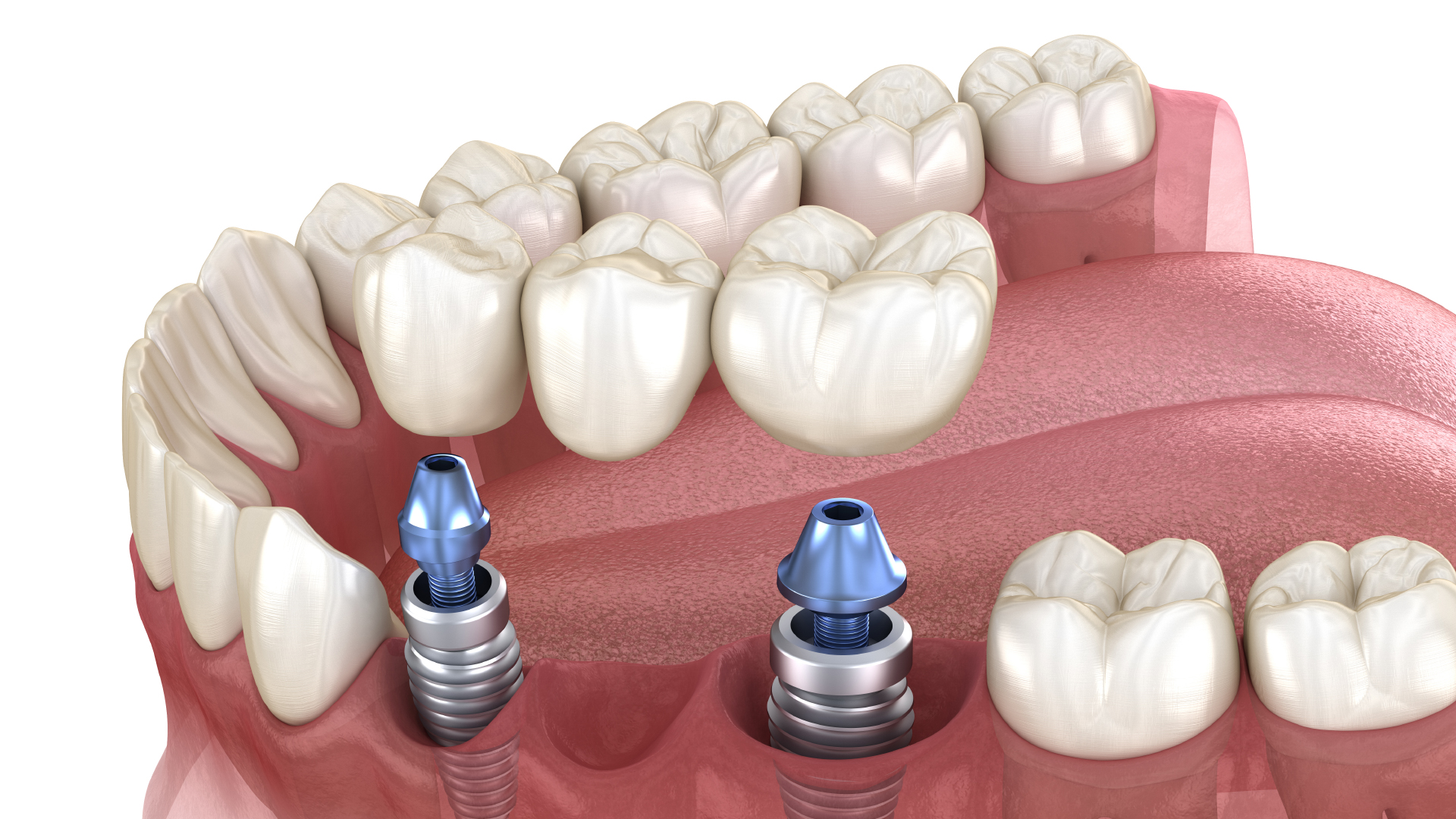
Implant-supported bridges
Different types of implant-supported bridges are available, depending on the number of teeth to be replaced. The number of supports guarantees the stability of the artificial teeth and an efficient and balanced mastication. In most cases, two titanium implants screwed into the jawbone act as the root, to which a bridge consisting of three ceramic teeth is attached.

Bridges on teeth
There are several devices that can be used to replace a missing tooth when the neighboring teeth are healthy. The bridge can be bonded, with “wings” that limit the dentist’s intervention on the adjacent teeth. The prosthesis can be fixed in “cantilever” extension, on only one of the neighboring teeth, or on both.
To treat damaged or unsightly teeth
To replace a single broken or damaged tooth, depending on its position and function, but also on its condition, two solutions are available: the dental crown on a tooth or the dental veneer. Since not all crowns and veneers are equal, making the right choice and finding the best quality/price ratio is crucial. At Body Expert, we favor the use of 100% zirconia monolithic ceramic crowns, for maximum chewing resistance, with a hand-applied 7-layer Emax finish, for a natural look and adapted to each patient. The same choice of high quality and maximum resistance for Emax veneers, 100% porcelain with a 7-layer hand-applied Emax finish, which require a light filing, unlike Lumineers veneers, but for a much more natural and personalized result.


Dental crown on tooth
The dental crown, made of ceramic, alloy or metal-ceramic, is an artificial tooth that conforms to a natural tooth, ensuring its function, shape and aesthetics. When it is not attached to an implant, it can be bonded to the original tooth, provided that the latter is prepared to receive a pivot that will support the dental crown and fit perfectly between the adjacent teeth. It allows to restore, with a limited invasive treatment, a damaged, devitalized, deeply decayed tooth or a tooth blocked by a filling too important to consider a classic conservative treatment in amalgam, inlay or composite resin. If the tooth is damaged, it will be treated and trimmed to receive a post to support the crown. If the tooth is healthy, it will be cut to support the crown, but without a post. Adapted without risk to any age, it allows you to regain normal chewing, a better oral health and a more beautiful smile.

The best denture crowns are made of monolithic zirconia ceramic with Emax finishes. These crowns are made entirely of ceramic and have no metal framework support, unlike metal-ceramic crowns, which have only the outer layer of porcelain. The advantage is that the absence of metal frameworks provides better translucency, and the Emax zirconia finishes guarantee great strength and perfect aesthetics, with a range of shades to match the natural color of each patient’s teeth. They offer a lifespan of between 10 and 30 years, provided you choose the best brands and adopt perfect oral hygiene.

Protect a damaged tooth for care
The tooth is first treated and cleaned of any cavities, before a post supports the dental crown and fits perfectly between the adjacent teeth. The crown thus makes it possible to reconstitute, with limited invasive treatment, a damaged, devitalized, deeply decayed tooth or a tooth blocked by a filling that is too large to consider a classic conservative treatment using amalgam, inlay or composite resin.
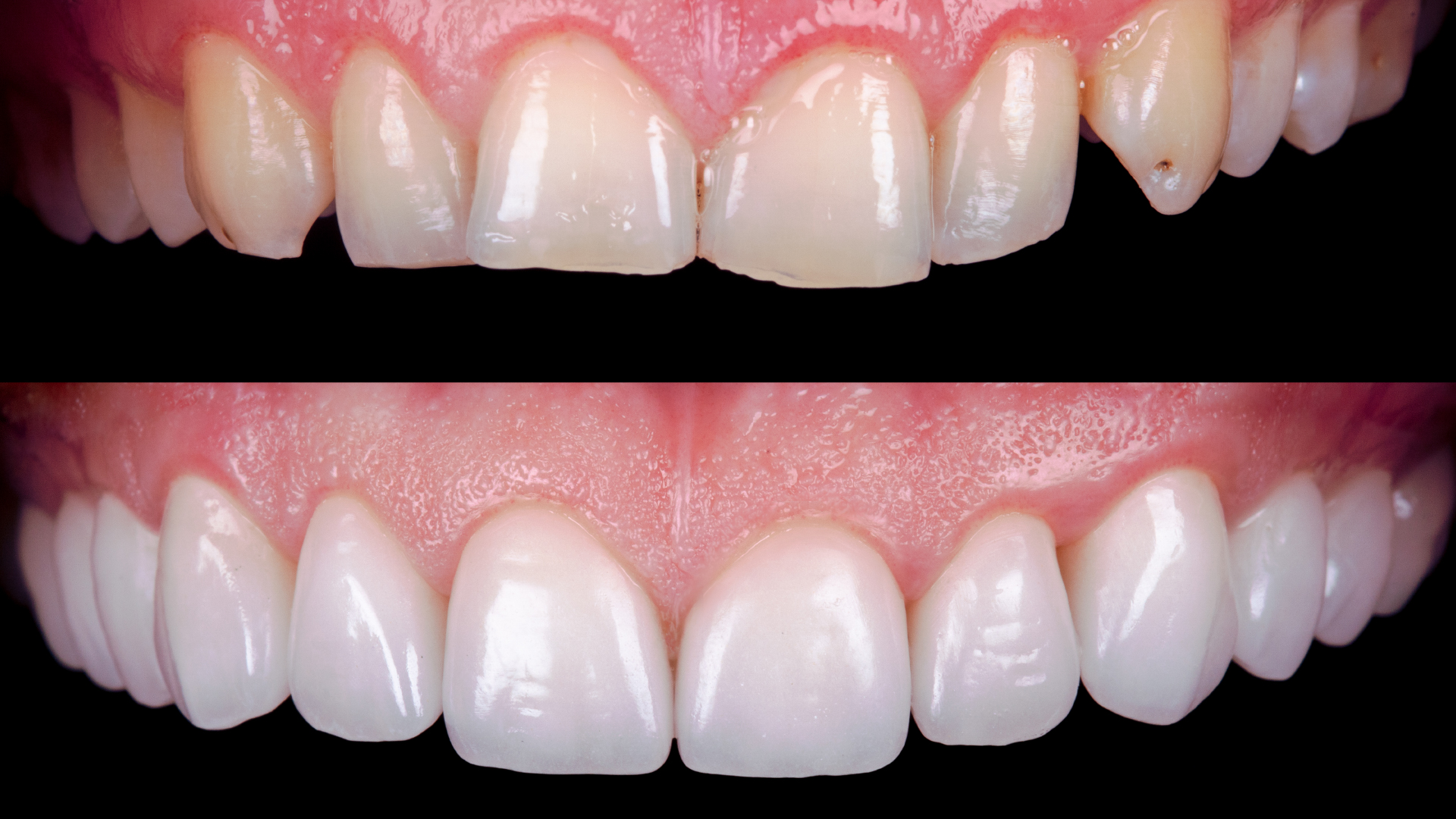
Replace a deformed or ugly tooth for aesthetics
The tooth is reshaped to remove the deformed and unsightly material and to prepare the crown that will cover it, while preserving a maximum of healthy tissue.
The dental veneer
This surface dental prosthesis is a periodontal technique that allows a thin ceramic film to be bonded to the front teeth, for a perfect aesthetic smile. Dental veneers can also be used to restore one or more discolored or stained, partially broken or chipped teeth. It can realign the teeth of the smile, correcting the alignment, spacing or overlapping of the teeth, when these defects are not too pronounced. As the name suggests, dental veneers cover only the front and sides of a tooth.
Made of composite resin or ceramic, they have a lifespan of 10 to 30 years, provided that you choose the best brands and take good care of your teeth.

However, veneers are not suitable in cases of dental malocclusion or bruxism, periodontal disease, thin enamel or teeth that are too degraded. The dental surgeon will then prefer to place a dental crown.
Inlay-Onlay prosthesis
When a tooth is slightly degraded, but not enough to require a crown, the dentist may prescribe an Inlay-Onlay prosthesis, to fill cavities and restore the tooth. An inlay is inserted inside the tooth, while an onlay fills in the outer edges of a tooth. Used for molars and premolars, the Inlay-Onlay, made of gold before, is nowadays made of ceramic or composite. This treatment offers a much greater resistance and longevity than the old fillings, which have now been banned from dental offices.

Removable dental prostheses
Thanks to their low cost and ease of installation, removable dentures, complete or partial, are popular with patients who do not want or cannot afford fixed dentures. Replacing one or more teeth, or even a complete gap, these dentures can be easily removed according to the patient’s lifestyle and needs. A system that can be easily repaired and upgraded in case of new tooth loss. However, they are much less durable, aesthetic and comfortable than fixed dentures. Dentures are more often prescribed to elderly people who cannot wear fixed dentures for various reasons (age, health, bone condition, budget…).
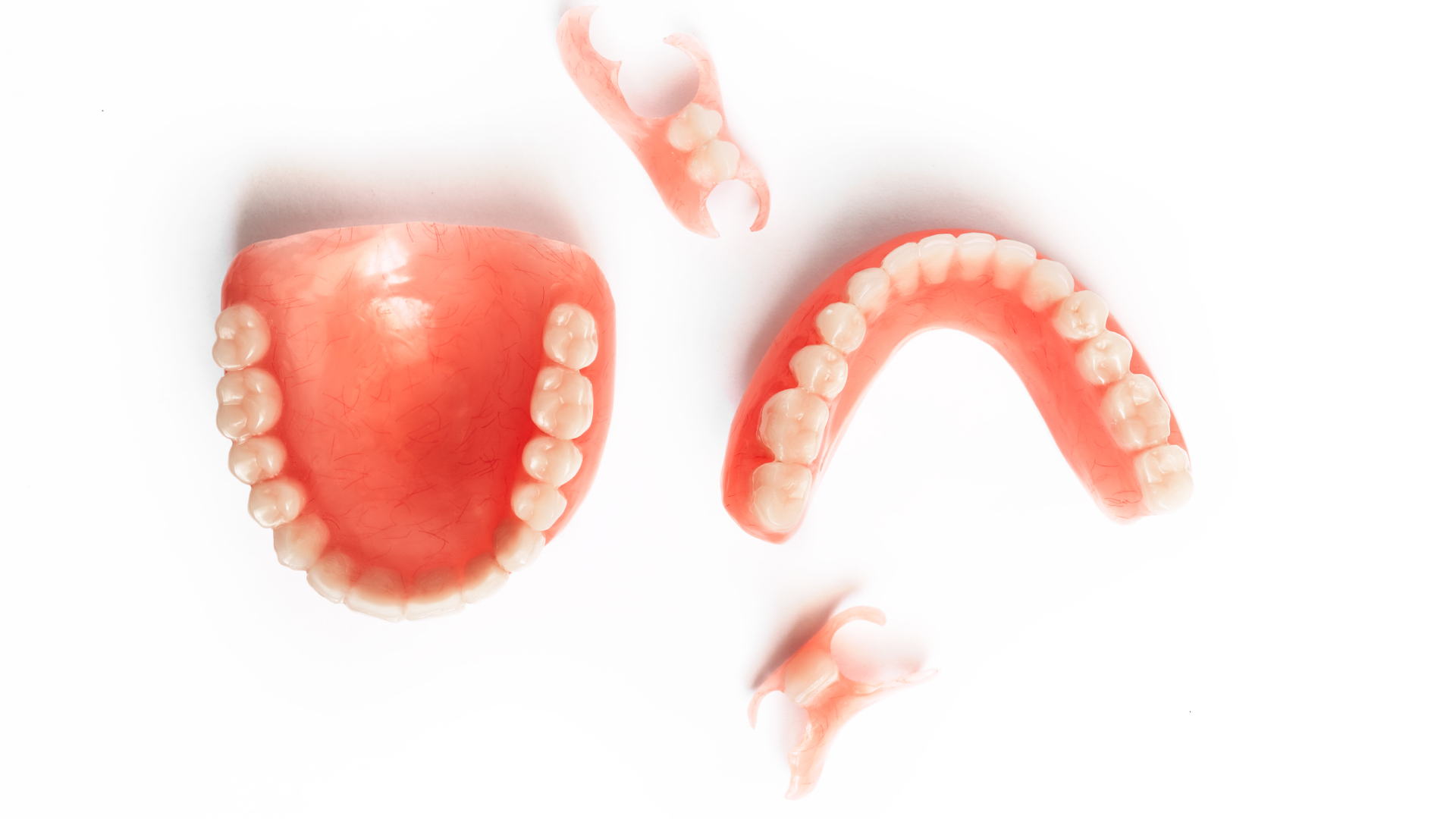
Partial removable prosthesis
The partial removable prosthesis rehabilitates an incomplete dentition, by replacing one or several missing teeth, adjacent or not. It rests on the gums and the existing dentition, and is maintained by hooks on the healthy neighboring teeth. It can be made with a gingival resin base that mimics the gums, into which the resin artificial teeth are integrated. Easier to produce and inexpensive, these partial prostheses are mostly used as transitional prosthesis before the placement of implants. Resin has several disadvantages: it dries out the patient’s mouth, discolors quickly, and breaks easily if dropped.
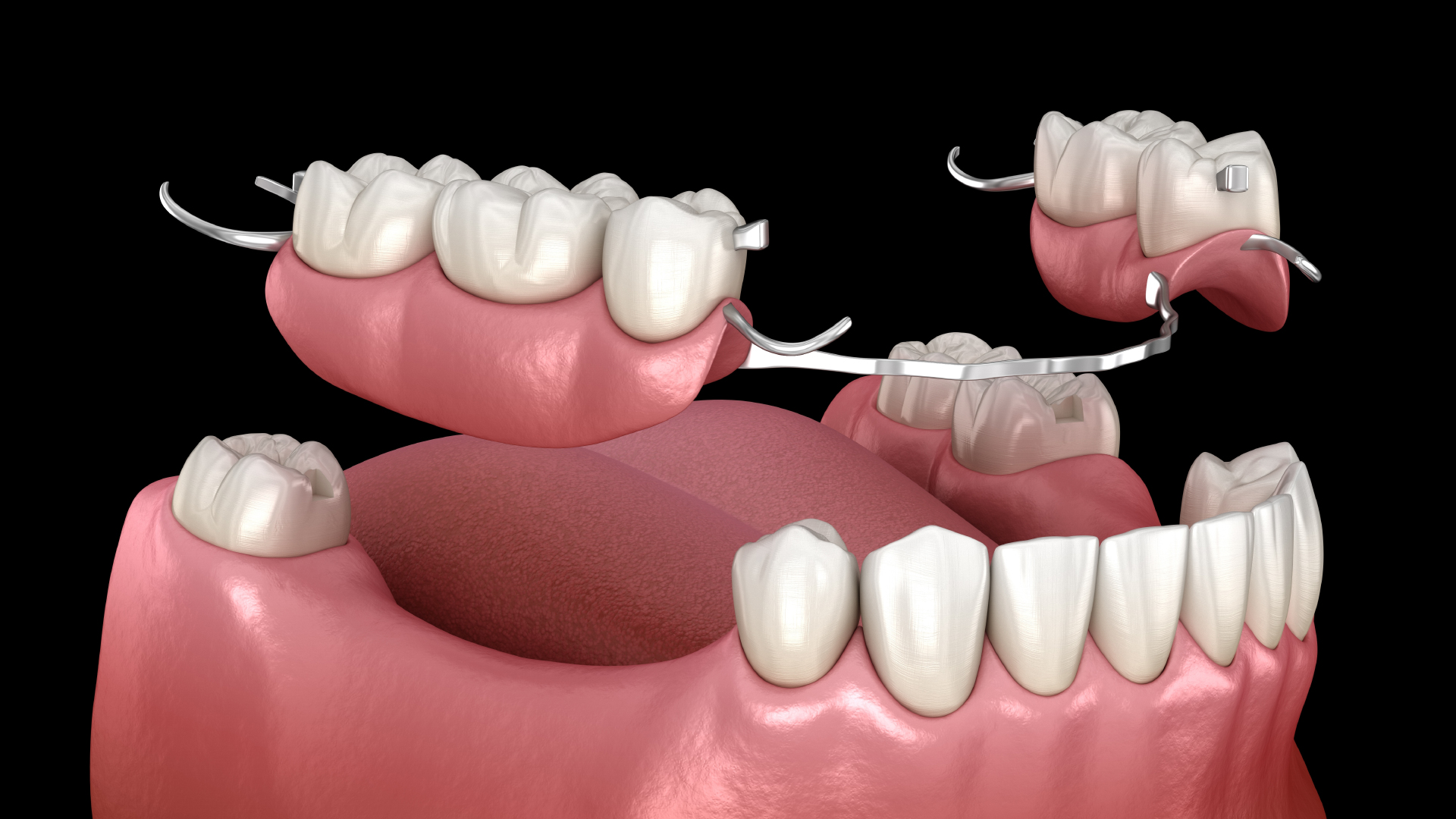
On the other hand, the removable prosthesis with a metal frame, covered with pink resin and on which the artificial teeth filling the edentulous area are fixed, is a durable solution, light and easy to remove, which preserves more the gum and the adjacent healthy teeth. However, it does not last longer than 10 years and the appliance is fragile.
Complete removable prosthesis
The complete removable prosthesis can replace a total edentulousness of the lower or upper jaw. At the top, the prosthesis rests on the palate and the gum, while at the bottom, it is fixed only on the gum. These dentures are held in the mouth by a suction cup effect. They are made with a metal mesh embedded in the resin, which increases the longevity of the denture, but will never last more than ten years.

Even if they are economical, easy to make and easy to put in, discomfort is the main defect of a complete removable denture. Even with a precise molding of the mouth, including the gums, cheeks and palate, allowing the prosthesis to fit, the soft parts of the mouth are constantly changing: the prosthesis can quickly create discomfort, even pain. Moreover, a denture cannot produce the same masticatory force as bridges or implants. In addition to the laborious hygiene requirements, dentures can also interfere with speech and taste perception.

The price of dentures
The price of dental prostheses is subject to a great variability, depending on the dental office, the treatment and the quality of the material chosen, as well as its coverage by the Health Insurance of the patient’s country. The dental condition may also require a bone graft, a sinus lift or a gummy smile treatment, which can add to the cost. The NHS offers much better coverage to removable dentures, even if the solution is less comfortable, durable and aesthetic than fixed dentures. Fortunately, dental tourism has greatly democratized access to fixed dentures mounted on implants, offering a quality/price ratio that allows thousands of patients every day to regain healthy teeth, a radiant smile and finally, a better self-esteem.

Price comparison of fixed dental prostheses
Implants
The price of dental implants vary according to the fees of the dental clinic and surgeon, the brand of implants and the quality of the crowns chosen.
| UK | US | Holland | Turkey | Hungary | Spain | |
| High-end*** | £3400 | $4,800 | 4500€ | 850€ | 1520€ | 1900€ |
| Medium range** | £2100 | $3,500 | 2700€ | 675€ | 1080€ | 1350€ |
| Entry-level* | £1700 | $2,750 | 1800€ | 530€ | 980€ | 1200€ |
Please note: this comparison is made on a range of Straumann implants for Turkey (brand recommended by Body Expert) versus an equivalent range but with other brands for other countries. Please pay attention to the brands and models proposed by other providers than Body Expert, the prices may be lower but the quality lower.
Crowns
The price of implant-supported crowns varies according to the dental fees of the clinic and the dental surgeon, the prices charged by the prosthetist and the choice of material.
| Type of crown | Prices in Turkey | Prices in USA | Prices in UK | Prices in Switzerland |
| Zirconia Crown | 250-400€ | $800 to $1,700 | £600 to £800 | 1100 CHF to 2000 CHF |
| Emax crown | 300-450€ | $1,000 to $2,000 | £800 to £1000 | 1600 CHF to 2500 CHF |
At Bodyexpert: 100% Zirconia crown with Emax finish (7 layers by hand) for 250€/unit
All-On-6 dentures
The prices shown here include an All-On-6 treatment with six Straumann implants and 12 Emax crowns, brands that are considered more expensive but more durable and of higher quality than their counterparts. Beware: some dental clinics abroad use copies of reputable brands that are made in China and of questionable quality. For your teeth, demand the best!
| UK | US | Holland | Turkey | Hungary | Spain | |
| High-end*** | £24000 | $34,000 | 31000€ | 6000€ | 10500€ | 13300€ |
| Medium range** | £16000 | $26,000 | 20000€ | 5000€ | 8000€ | 10000€ |
| Entry-level* | £14000 | $22,000 | 14400€ | 4150€ | 7800€ | 9500€ |
Please note: this comparison is based on an all-on-6 consisting of 6 Straumann implants and 12 Emax crowns per jaw. Please pay attention to the brands and models proposed by other providers than Body Expert, the prices may be lower but the quality lower.
Emax par mâchoire. Veuillez faire attention aux marques et modèles proposés par d’autres prestataires que Body Expert, les prix peuvent être plus bas mais la qualité moindre.
* the entry level is the Neodent model from Straumann at Body Expert
** the mid-range is the Straumann Medentika model from Body Expert
*** the top of the range is the Straumann model from Straumann at Body Expert
The type of prosthesis that tops the implants at Body Expert is a 100% zirconium crown for maximum resistance and a 7-layer Emax finish by hand for a natural aesthetic result.
Veneers
Prices for veneers vary greatly, depending on the dental practice’s fees and the brand chosen. The prices observed cover one veneer per unit. To learn more, read our complete guide on the price of dental veneers.
| Material | Average price per veneer in UK | Average price per veneer in Spain | Average price per veneer in Hungary | Average price per veneer in Turkey |
| Composite resin veneer | Between £275-£475 | 380€ | 350€ | Not recommended
|
| Porcelain veneer with Emax finish | Between £650-£850 |
480€ | 450€ | 250€ |
| Lumineers | Between £850 to £950 | 900€ | 800€ | Not recommended |
At Bodyexpert: 100% porcelain crown with Emax finish (7 layers by hand) for 250€/unit
Refund policies for fixed dentures
A fixed dental prosthesis is composed of several elements, but each element benefits from a different nomenclature and social coverage. In the UK, implants are not refunded, except in very rare cases of bone or genetic diseases, or serious accidents. Crowns and fixed dentures can be fully covered, according to the patient’s profil. As for dental veneers, they are considered as a cosmetic treatment, and are therefore not reimbursed by the Health Insurance or by private insurance companies.

Prices and refunding of removable dental prostheses
For better access to elderly people in social difficulties, the price of removable dental prostheses is much more accessible than for fixed dental prostheses, and therefore much more covered by health insurance, allowing to easily consider a full coverage. Depending on social conditions and the type of denture prescribed, patients may be fully or partially reimbursed for their fixed bridges and removable transitional dentures. Full resin dentures are fully reimbursed.
Placing dentures abroad
In the case of a crown or bridge without implant, or for removable dentures, all these prosthetic procedures can and should be performed in your country: they are generally reimbursed, partially or totally depending on the case, and their prices are accessible to most people. On the other hand, when it comes to fixed dental prostheses on implants, whether to replace a single tooth or a complete set of teeth, or for the installation of dental veneers, dental tourism abroad is a very interesting alternative, allowing savings of 40 to 80%! Most popular destinations for European patients: Hungary, Turkey, Spain…
Getting your dentures done in Turkey
Istanbul, the economic and cultural capital of Turkey, is a medical tourism destination with a reputation for excellence. The professionalism, experience and reputation of its dental surgeons, implantologists and dental technicians, the quality of its dental clinics and the use of the latest technologies available, make it possible to envisage the installation of dental prostheses with complete peace of mind. Not to mention the quality of the tourist infrastructure and the particularly warm welcome of its inhabitants.
In addition, the risks are limited: the constant presence of an accompanying translator, the quality of the medical facilities and the rigorous hygiene conditions put the patient in the best of dispositions. For the installation of fixed implanted prostheses, two 3-day stays, at least two months apart, are necessary, but the difference in rates, and the quality/price ratio is such that the trip remains profitable, even including airfare, living expenses and a 4 or 5 star hotel. In the event of a dispute, the law of the country prevails: make sure that the dental clinic offers all the necessary guarantees, with full coverage of costs in the event of a postoperative problem. This is the case for all Body Expert’s partner dental clinics.
How to maintain your dentures?
Wearing a fixed dental prosthesis requires rigorous oral hygiene, guaranteeing good dental and gum health and a longer life for artificial teeth. For removable dentures, the dental surgeon can prescribe you certain adapted toothbrushes, according to the type of denture worn. During brushing, removable dentures must be held over the sink with a washcloth to prevent them from breaking when they fall out. During the night, they should be soaked in a cleaning and descaling liquid, then brushed again in the morning before being worn. Plaque build-up on dentures can cause bad breath, stomatitis (inflammation of the soft tissues that cover the inside of the mouth) and even bone loss.

Is denture placement painful?
Denture placement is absolutely not painful, unless the dentist and his team are bad. Removable dentures do not require surgery or anesthesia. For fixed dental prostheses, whether fixed crowns on bridges or implants, any intervention on enamel, tooth, root, gum or bone is preceded by local anesthesia adapted to the nervous proximity, the patient’s condition, the depth and the time of the intervention. In very rare cases, a general anesthesia may be necessary, or sedation, for patients with dentophobia.

What is the lifespan of a dental prosthesis?
With good dental hygiene, titanium or zirconia implants are made to last a lifetime. Ceramic crowns, mounted on implants, can last at least twenty years, provided that you brush your teeth well, just like dental veneers, which can tend to stain with excessive consumption of tobacco, tea and coffee. It is imperative to strictly follow all the advice of the dental surgeon for the post-operative period, especially during the healing period between the implantology and the installation of the permanent crowns. With proper maintenance, metal-ceramic bridges, for partial or complete repair, have a lifespan of 10 to 15 years depending on the brand. Don’t forget to use dental floss, a specially adapted brush or a pulsed jet regularly for a perfect cleaning.
Removable dental prostheses, such as partial or complete dentures, have a much more limited lifespan: if they are not reinforced with a metal grid, the resin degrades and discolors quickly, while the clasps should be changed at least every two years. Artificial teeth made of ceramic do not lose their colors, but remain fragile: the lifespan of a denture generally does not exceed ten years.
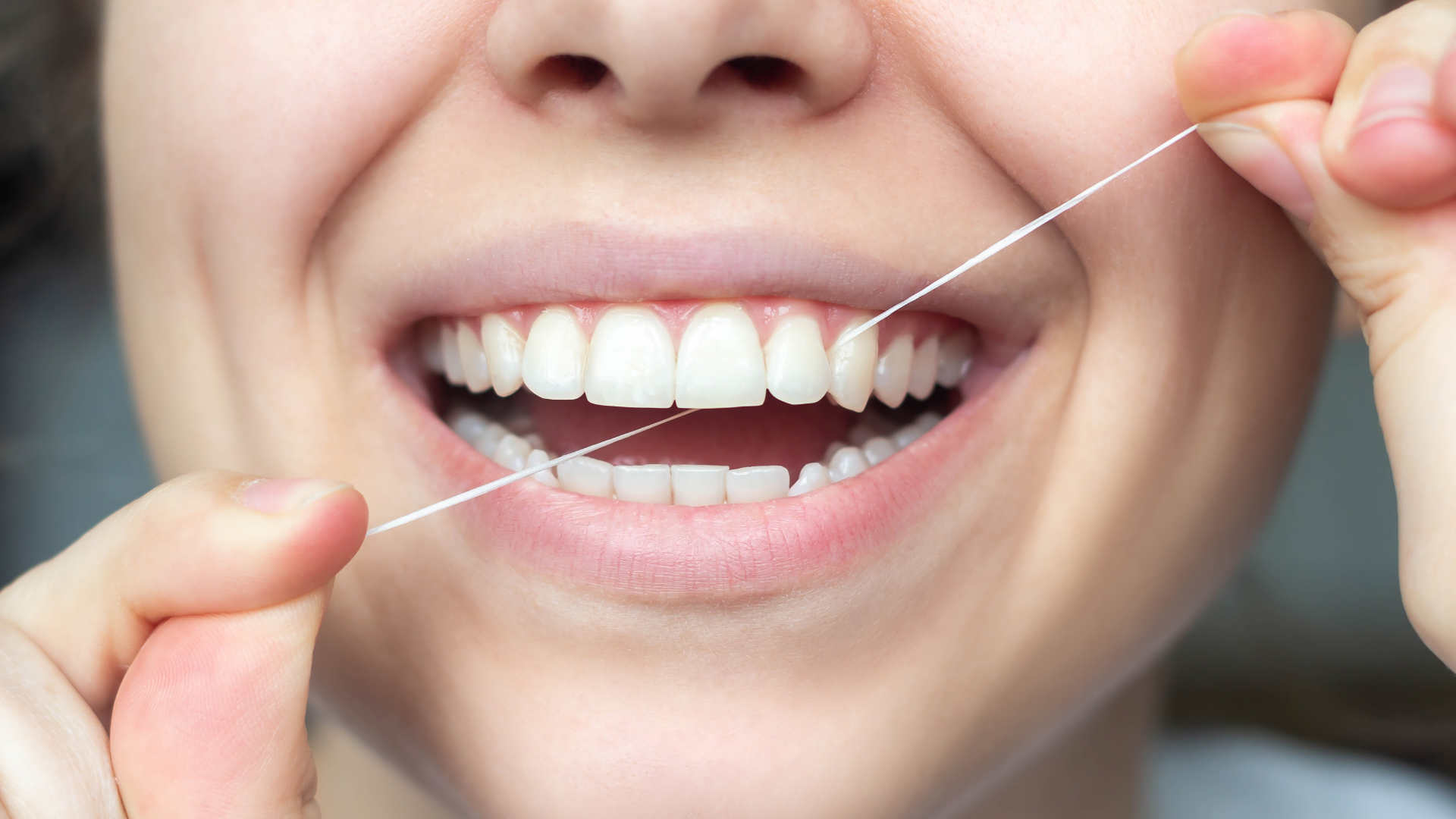
17689 vues
0 commentaires
0



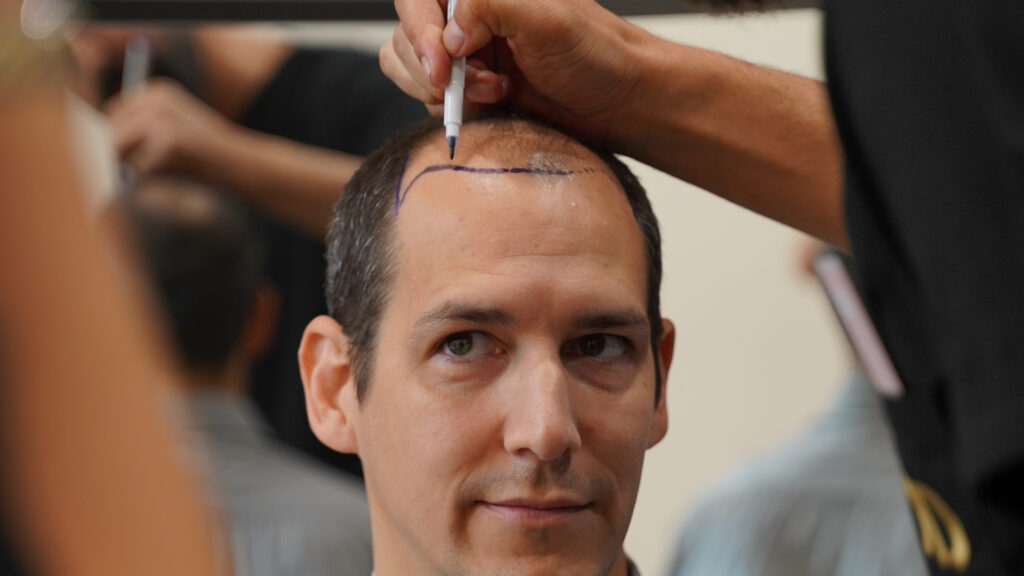


Il n'y a pas de commentaires pour le moment.